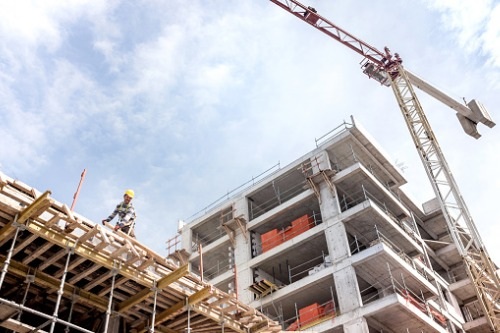Covid-19: Mothballing a construction site – What to look out for

Almost all construction projects will be mothballed at some point during their delivery. Typically, this will be for a period of between a few days and a couple of weeks for a national holiday. These are uncertain times however and there is little clarity around how long any Government imposed restriction will last. To avoid an incident as a result of a prolonged closure, there are a number of additional measures firms should take to protect both the public and their project.
Fire
When a site is closed, the potential sources of ignition are dramatically reduced. However, with few people on site, detection of any fire that does occur will take longer and could cause more damage as a result. The focus should be on minimising the amount of combustibles on site, reducing the potential for electrical faults through isolations, and reviewing physical security arrangements to combat arson threat.
Where a project includes elements of timber frame construction, any mitigation measures identified in your off-site fire spread risk assessment should be fully implemented and their durability for the planned mothballing period confirmed.
Weather proofing (natural hazards)
With a site unattended, a number of additional steps should be taken to weather-harden your project. Wind and rain can test a number of elements on a construction site, particularly temporary works such as scaffolding, cranes, temporary weather-proofing and excavations. Assess how weather-proof each aspect of your site is over a long term-term period and make adjustments as necessary.
Security
Mothballed sites, similar to vacant properties, become targets for criminals. In response, you should consider removing from site those items known to be attractive targets to thieves including: survey equipment, compressors, machine attachments, and computer equipment. Where left on site, these items should be stored in anti-vandal container units. You should also consider additional measures to deter and delay thieves: signage, additional security lighting, an inner compound for any plant remaining on site. Buildings should be secured at ground-floor level: all openings should be robustly closed off. In high-risk areas, additional temporary CCTV and/or security patrols and guarding may be necessary.
Escape of Water (building services)
A pipe burst when no one is on site takes longer to detect and can cause significant damage and delays. Wet building services should be isolated, including supplies, storage tanks and pump sets. Where the expected mothballing period is more than two weeks, wet services should be drained and measures taken to prevent corrosion.
Site condition – Safeguarding the public
Many of the hazards with the potential to injure members of the public and trespassers, to whom you owe a duty of care, will be addressed through the steps recommended above. You should also consider specific steps to prevent: falling objects (remove materials from scaffolding and store and stack materials away from the site perimeter); falls from height (barrier off or cover over excavations and pits, remove ladders from excavations and scaffolds); contact with hazardous substances (removed from site or stored in anti-vandal container units where safe to do so).
Emergency ResponseHaving a pre-planned response is essential in minimising the impact of any incident. You should have project-specific emergency response plans that include out-of-hours arrangements already, but these should be reviewed prior to closing the site. In particular, are emergency contact details correct and accessible?
Audit and inspection
When a site is open, the condition of the works and risk mitigation measures are checked daily. When a site is closed it is important to identify any change quickly in order to minimise the risk of escalation. The key to this is a rota of inspections. The frequency should be determined through assessment of risk, particularly the level of hazard and site location. Inspections should record the condition of the works and measures highlighted above and include photographs of pre-determined views.
Download your copy of QBE's Mothballing checklist CLICK HERE
Authored by QBE
About QBE
QBE European Operations is part of QBE Insurance Group, one of the world’s leading international insurers and reinsurers and Standard & Poor’s A+ rated. Listed on the Australian Securities Exchange, QBE’s gross written premium for the year ended 31 December 2018 was US$13.7 billion.
As a business insurance specialist, QBE European Operations offers a range of insurance products from the standard suite of property, casualty and motor to the specialist financial lines, marine and energy. All are tailored to the individual needs of our small, medium and large client base.
We understand the crucial role that effective risk management plays in all organisations and work hard to understand our clients’ businesses so that we offer insurance solutions that meet their needs – from complex programmes to simpler e-trading solutions – and support them in minimising their risk exposures. Our expert risk management and rehabilitation practitioners focus on helping clients improve their risk management so that they may benefit from a reduction in claims frequency and costs.

